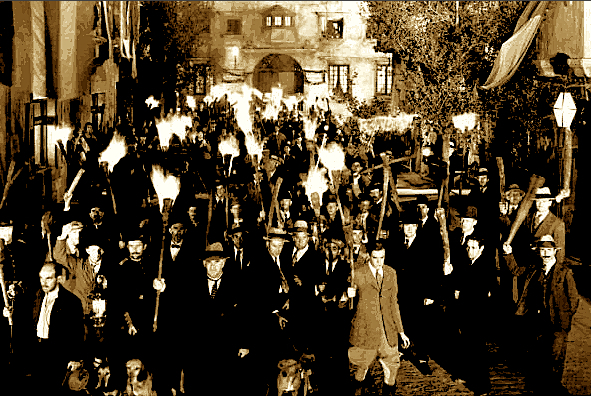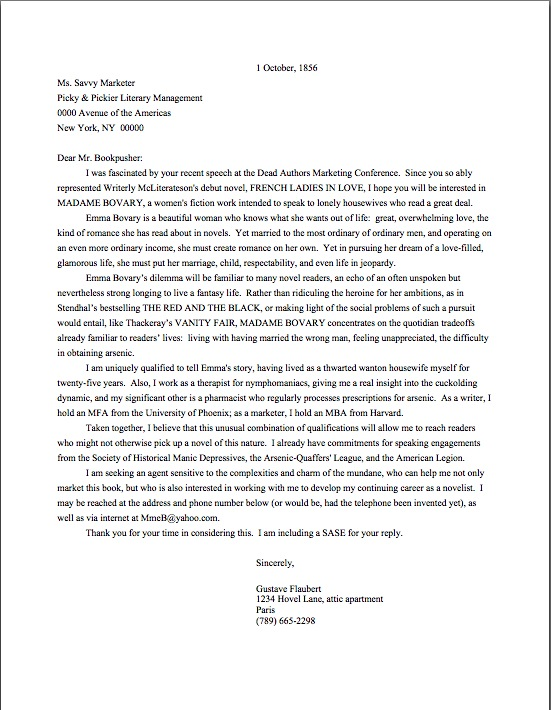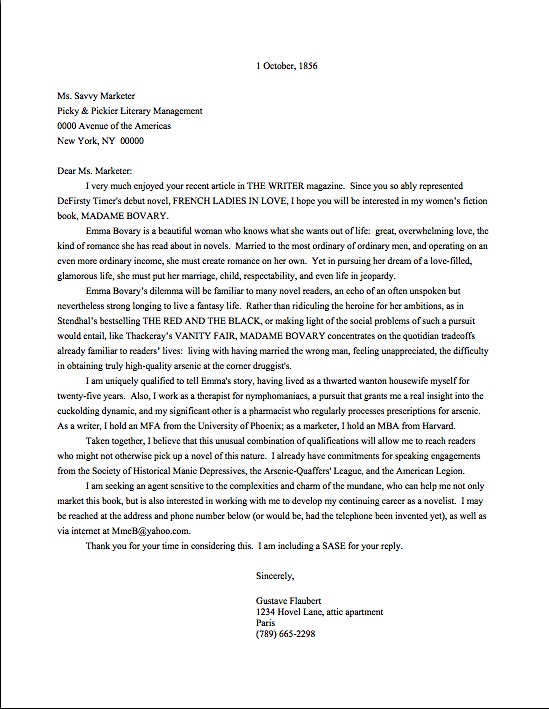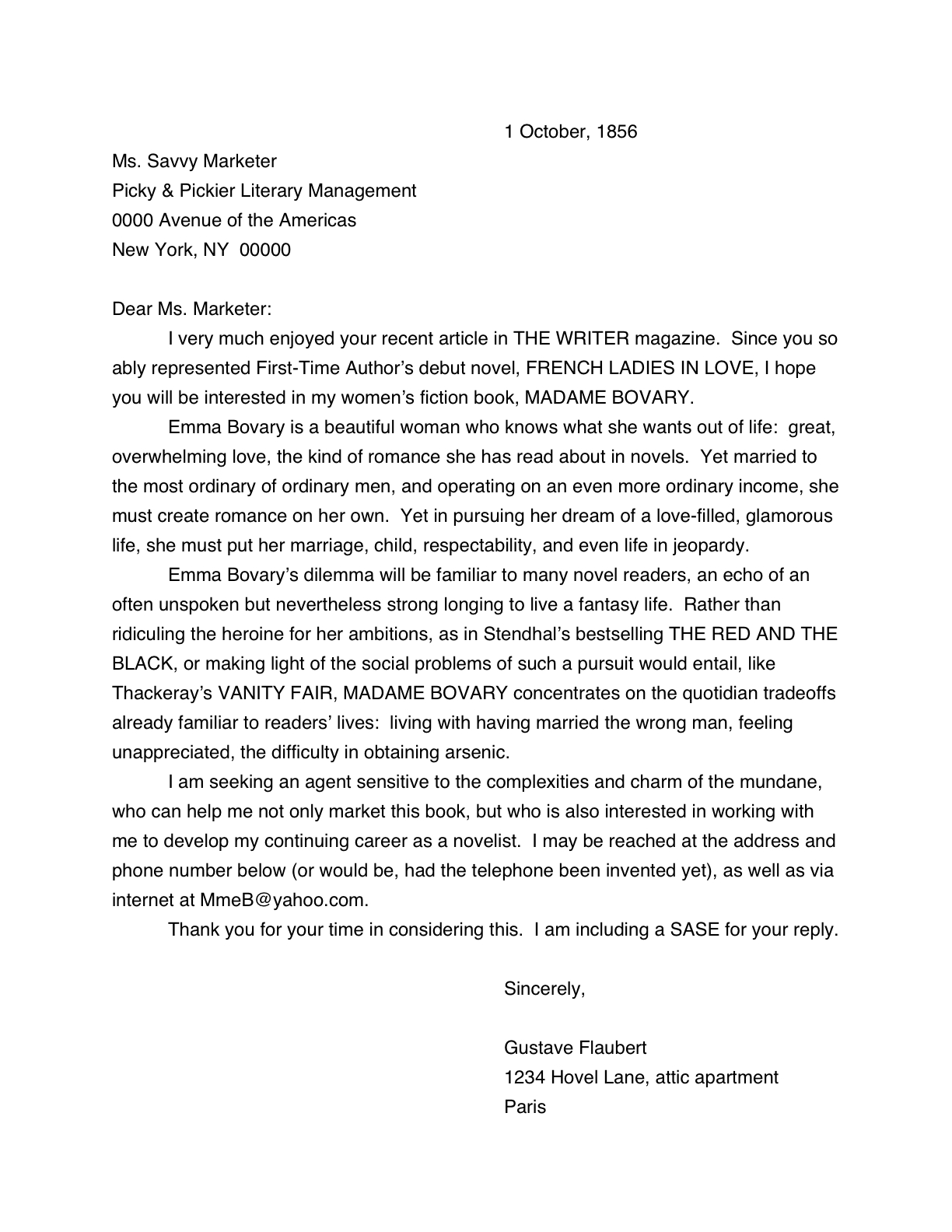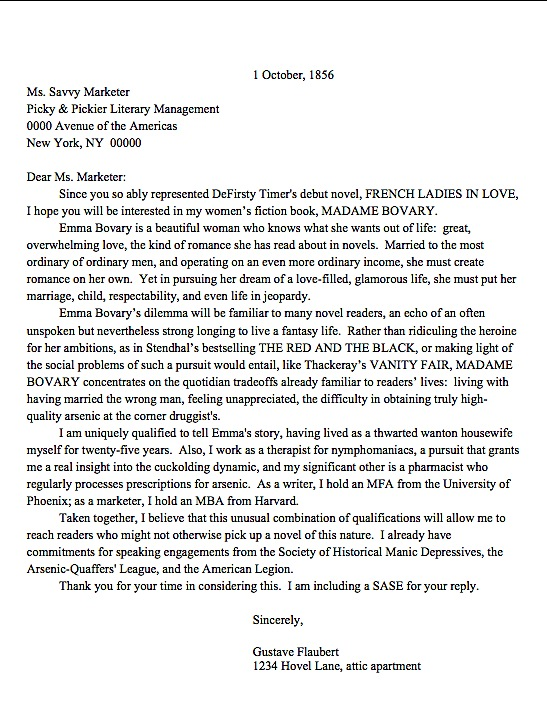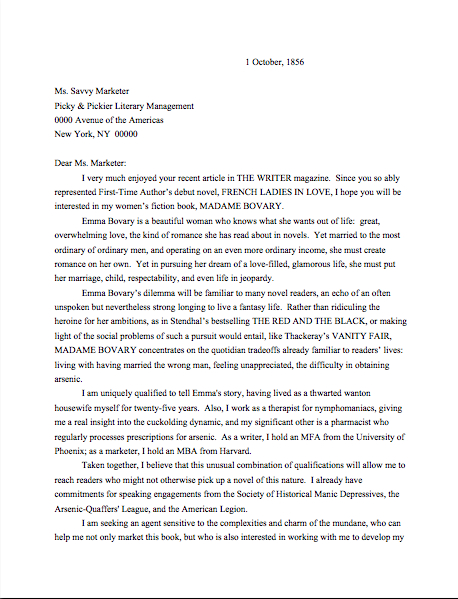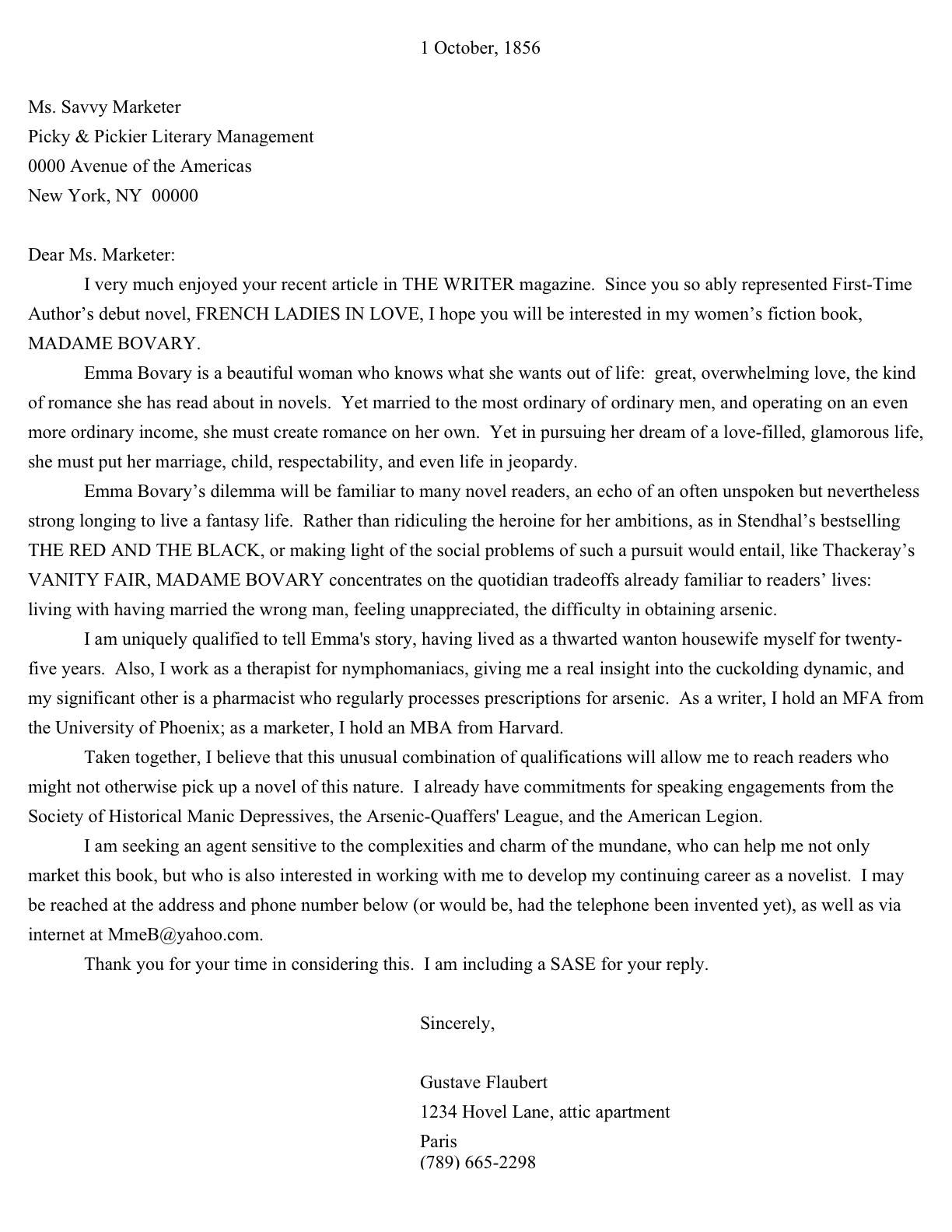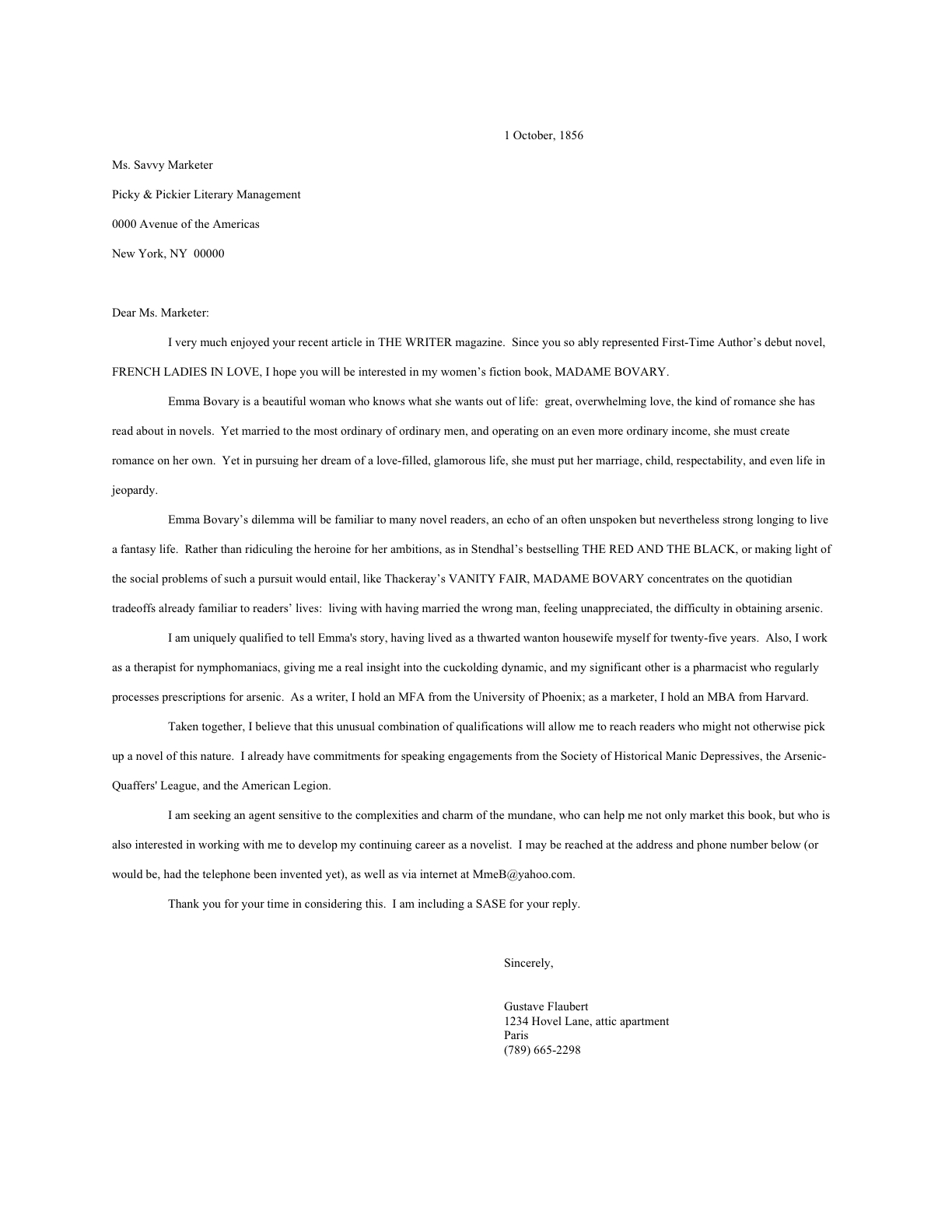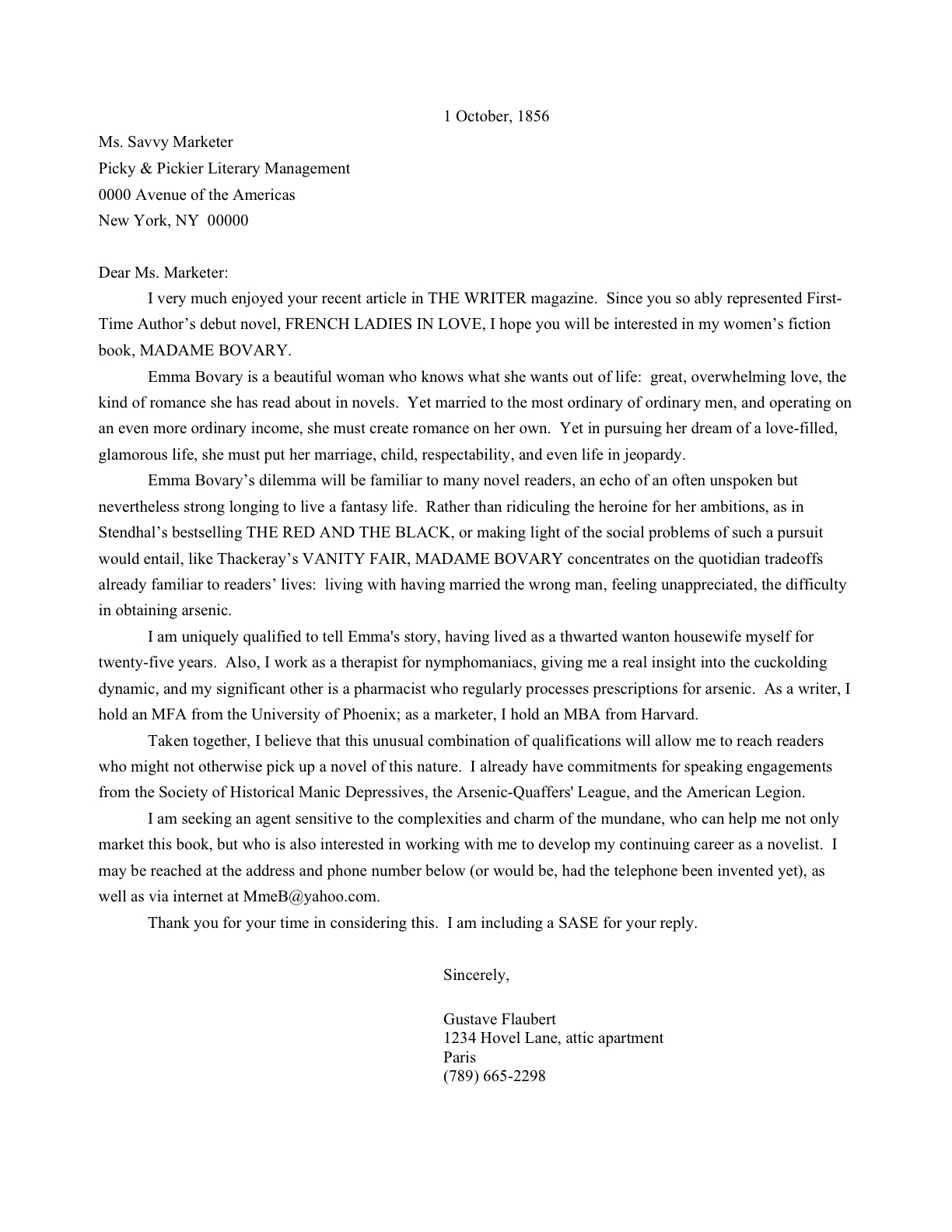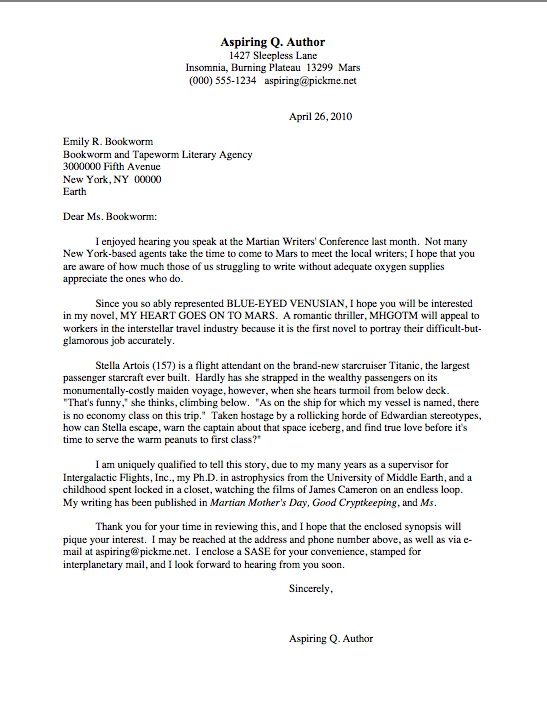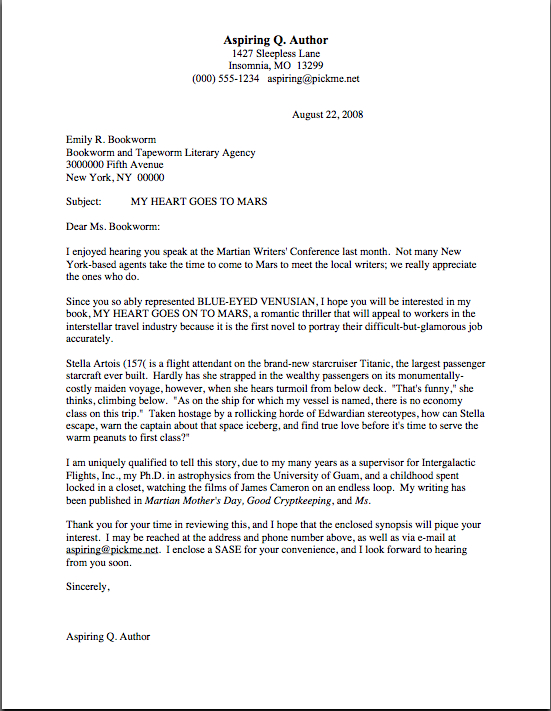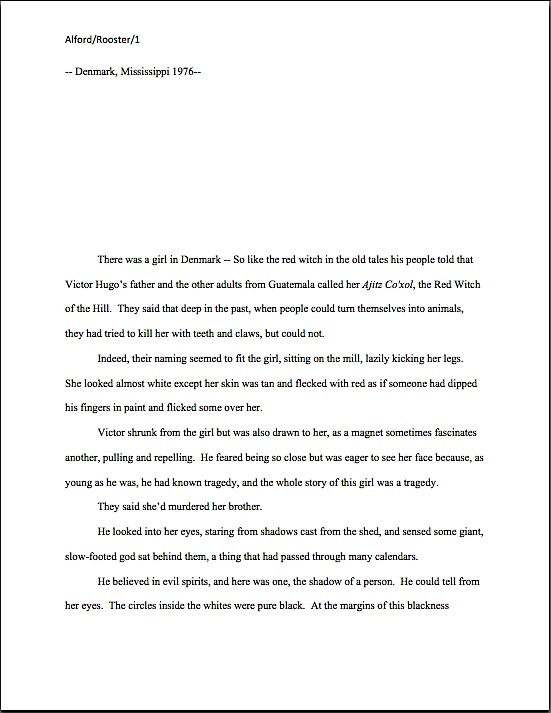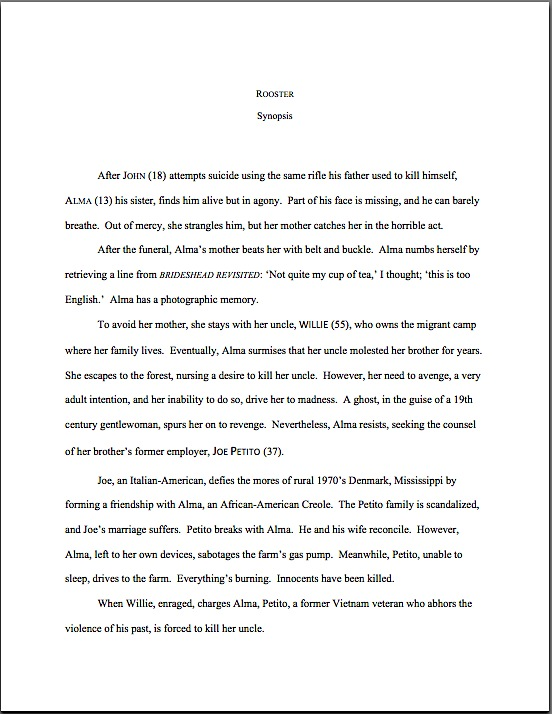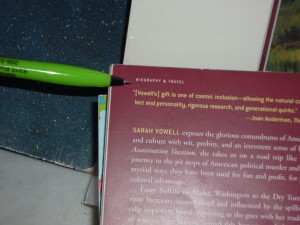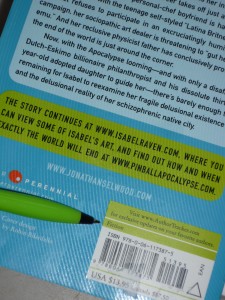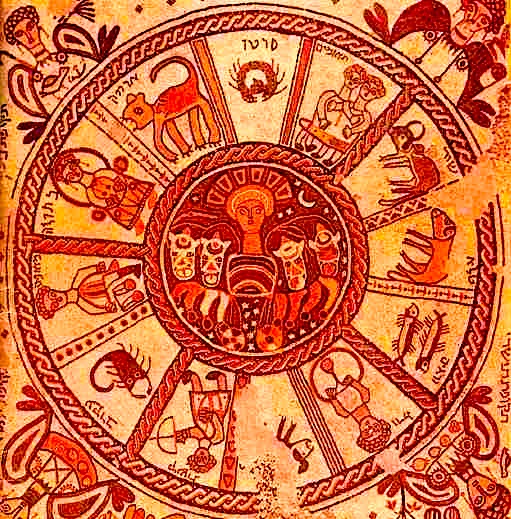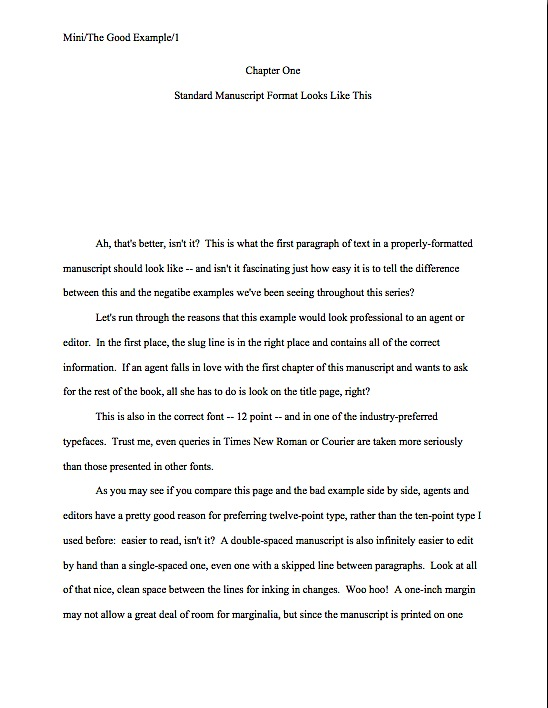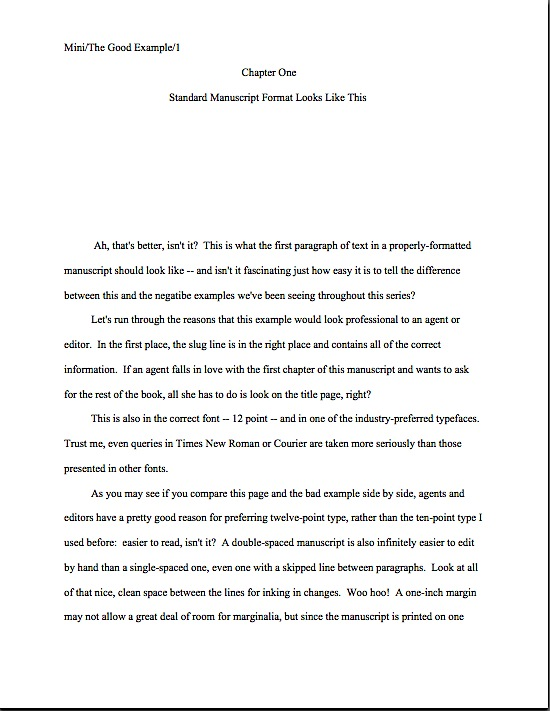Since I’ve gone down to posting only once or twice per week — a rate I hope to be ramping up again, perhaps as soon as tomorrow — I’ve noticed something interesting, campers: reality seems to have slowed its rate of tumbling all over itself to provide me with practical or symbolic examples of whatever I plan to discuss next. The last time I delved into the fine art of querying, the world around me seemed to burst into anecdotes every time I looked up from the computer.
I’m glad to report that since Thanksgiving, the Muses have gotten off their collective tuffet and hopped back on the illustrative story bandwagon. This weekend, they provided me with a lulu — and, perhaps to make amends for their lack of productivity throughout the autumn, they seem to have gone out of their way to provide parallels to not just one, but several widely misunderstood aspects of querying. So sit back, relax, and let the girls do their stuff with today’s tale.
One of the more charming (or more trying, depending upon how one chooses to look at it) aspects of having grown up in a small town lies in the ongoing interconnectedness one feels with the playmates of one’s early years. Where the friend options are few, pickiness is a luxury. Even if you happened to loathe a particular nursery school classmate with abandon, chances are that by the time the two of you graduate from high school, you will probably have enjoyed at least a couple of moderately pleasurable collective moments along the way. Or at least having shared the often-underestimated bond of having loathed the same person in junior high and having had the town’s elders shake their heads over your respective coiffure choices in high school.
Oh, you try to find more scintillating entertainment in the middle of a Zinfandel vineyard. Bucolic paradises are frequently very dull.
So although I left that delightful small town at a pace that can only be described as a dead run when I was seventeen, when my kindergarten classmate Kevin left a voice mail message last week, saying he had something important to tell me, I called him back with alacrity. We had spoken perhaps five times since we graduated from high school, but hey, we’d learned to play the xylophone together as tots: the least I could do was let him tell me something I had already heard from my mother (who had gotten the skinny via the garrulous grocery check-out clerk who had happened to scan Kevin’s mom’s Froot Loops earlier in the week), that he had proposed to a Lady From Elsewhere and was planning to move her back home.
That he chose to break the news in two short sentences should have warned me what was to come: even in kindergarten, Kev had embraced John Wayne-like levels of taciturnity; in situations both mundane and life-shifting, he has always eschewed wordiness. Nouns and verbs seldom occupied the same breath with him. Now, his sentences were not complete enough to contain his beloved’s name. By five minutes into our conversation, he was answering my polite questions about the LFE and their wedding plans with monosyllables — and seeming to enjoy it immensely.
I, on the other hand, felt as though I were cross-examining a hostile witness, the kind Perry Mason would have decided must be the murderer. “Well, I’m happy for you, Kevin,” I said, hoping to draw the teeth-pulling to a graceful close. “Do give my best to your mother — and, of course, to your lovely fiancée.”
The mention of the LFE seemed to galvanize him into action. “You should talk to her!” he cried, ignoring his beloved’s perfectly audible cries of, “Who, me?”
I’m not particularly given to heart-to-hearts with complete strangers, but sure that if not my mother, then at least the checkout clerk would be dying to hear some details about the LFE, I revved up my interview skills anew. After a startlingly brief set of exchanges, I was perfectly convinced that the LFE and Kevin were made for each other: she must make him feel like a positive chatterbox. Where he might go out on a limb with a yes or no, the lady favored non-committal humming.
I’ve conducted more productive interviews with mollusks. Actually, I’m fairly confident that your garden-variety mollusk bride-to-be might have coughed up a more substantive response to, “Tell me about your engagement ring,” than a terrified blurt of, “Um, it’s gold?” followed by thirty seconds of anxious silence.
Compared to her answers to most of my questions, that was a philosophical treatise. I might be going out on an interpretive limb here, but I suspect that the LFE is exceedingly shy.
If she was frightened to talk to me, however, she was petrified that I might get off the phone before Kevin returned. Or so I surmise, from the fact that my repeated, “Well, I really should let you get back to your evening together,” did not elicit anything that might remotely be interpreted as an invitation to hang up the phone, unless in the Far Land of Elsewhere, whimpering “No, don’t go!” is the standard way to say good-bye. I began timing the silences after her brief answers, just to have something to do.
Shortly after we’d broken the minute-and-a-half barrier, I heard something unexpected in the background: Kevin’s voice, talking to what sounded like a small child. By dint of a torturous game of 20 Questions, I managed to get the LFE to admit that she had a six-year-old (who, like her mother, was apparently devoid of a name), that she was in the room, and that Kev was playing with her. A full five minutes of motherly silence followed, punctuated only by my commentary on what I guessed the child to be saying and doing.
Having quite a bit of time on my hands, I found myself wondering if perhaps Kevin and the LFE were operating under a completely different understanding of the purpose of an interstate phone call than I had encountered before. Many of the requisite elements of a normal telephone exchange were here — two persons on the same phone line at the same time, an ostensibly exciting development to discuss, time in which to do it — but by no stretch of the imagination was this a normal telephone exchange. Was the point here to share time together, even if there was no conversation? Was having me listen to him chatter with the child Kevin’s way of letting me know that he was enjoying his new family, or did was he in another room, happy in the belief that his sweetie and I were enjoying a half an hour of uninterrupted girl talk?
Or — and this seemed increasingly likely as the seconds ticked by — had he simply forgotten that I was on the phone, and she was too meek to remind him?
Eventually, I did what any self-respecting small-town refugee would have done: I positively forced the LFE to listen to my thanking her for having made Kevin happy (“Mmmph,” she replied), wished her luck with the wedding-planning process — and faked an emergency to excuse getting off the phone. I have no idea whether she actually believed a curtain rod had fallen onto my cat, but at least she said good-bye and hung up.
And my readers heave a huge sigh of relief. “That was odd, Anne,” many of you point out, “but am I missing something here? Didn’t you at least hint that this event put you at least vaguely in mind of something having to do with querying?”
Why, yes, it did. From Millicent the agency screener’s perspective, queries that include some or even all of the required elements but seem to adhere to a different logic than she recognizes are not all that rare. Don’t believe me? Take a gander at the kind of e-mail that appears in her agency’s inbox on a regular basis.
Dear Ms. Agentson,
Communication, Garbled tells the story of Ambrosia, a woman trapped between conflicting forces beyond her control. Try as she might, she can’t see a way out, until Greg opens a door for her that she thought had been closed long ago.
Please give me a chance. I have worked very hard on this, and I really, really want to get it published.
Sincerely,
Struggling B. Storyteller
This artless little missive raises more questions than it answers, doesn’t it? “What on earth is this book about?” Millicent cries, rending her garments. “What forces? Why are they beyond her control, and what are the consequences? Who the heck is Greg, and what makes Struggling think a cliché like reopening a closed door conveys any specific meaning? Is Communication, Garbled the title, or is it a review of this letter? Perhaps most perplexingly, why does this writer believe it’s my job to figure out what his? her? book is about, rather than the writer’s job to convey the premise of the story lucidly?”
Why, indeed, Millie: you’re quite right that this vague e-mail does not give you enough information to figure out whether your boss, the agent of Struggling’s dreams, might conceivably want to represent this manuscript. It doesn’t mention the book category, the intended audience, the premise — and because this description could be applied equally well to thousands of wildly different plots, a screener would have absolutely no way of guessing productively on any of these essential points. If Struggling had opened with some indication of why s/he had picked this particular agency (like, say, Since you so ably represented Competent Author’s debut novel, UNCLEAR EXCHANGES, I hope you will be interested in my women’s fiction project…), Millicent might have been able to make an educated guess, but since she has hundreds of queries to screen before lunch, why would she waste time speculating?
Especially for a query that doesn’t even say whether the book it is pushing is fiction or nonfiction. Heck, if it hadn’t landed in the agency’s inbox along with 1500 similar missives, Millie might not even have been able to guess it is a query intended to solicit representation.
In short, it contains some of the elements of a standard query letter, but does not bring them together in a manner comprehensible to a reader who knows nothing about the book in question. From Millicent’s perspective, Struggling has missed the point of this mode of communication.
From the writer’s side of the SEND button, though, it’s fairly clear what happened here, though, isn’t it? Struggling knows what her book is about: concerned with the brevity requirements of a query, she’s generalizing. Millicent’s boss represents books like the one she’s written, so wouldn’t anyone at the agency be able to fill in the blanks about where this book would sit in a bookstore, who the target audience is, and why Struggling approached this agent in the first place?
The short answer is that it’s not Millicent’s job to read the querier’s mind, but the querier’s job to present her work clearly. The long answer is…wait five minutes in silence, then read the first sentence of this paragraph again.
On the outside chance that I’m being too subtle here: Struggling might well have written a stellar book, but her misinterpretation of the requirements of the query letter render the quality of the manuscript a moot point at the querying stage. Most of the time, this kind of query is the result of a writer’s having based the query not upon research about what the agent in question is seeking, or even what a generic query might contain, but rather a vague guess about what a query letter is.
Such guesses mystify the pros, frankly. They believe, and with some reason, that there are enough blogs like this, reputable books aimed at aspiring writers, and writers’ conferences out there that any writer serious about landing an agent should be able to learn the basic elements of a query quite easily. Even if that were not the case — but it is — many agencies go out of their way to list those elements for potential queriers, posting guidelines on their websites. That being the case (their reasoning continues), a writer with sufficient talent to compose a good book should be able to string those elements together in a graceful and coherent style.
So when a screener is confronted with a query that appears to have been written without either a basic understanding of what the requisite parts of a good query letter are or how those parts might be fitted together into a convincing argument to request the manuscript, she generally feels more than justified in rejecting it regardless of the inherent interest of the story. A query like Struggling’s, then, might be legitimately be regarded as self-rejecting: it differs enough from what Millicent has been trained to regard as the minimum standard for a successful query letter that it is instantly recognizable as a non-starter.
Were those shrieks of rage I just heard echoing around the ether, or has my house been invaded by harpies? “Talk about misconceptions!” those of you who have been wading through the mountains of querying advice out there wail. “Clearly, these people haven’t taken a look at the welter of information out there on the subject. I’m perfectly willing to follow directions, but there are literally thousands of sources of advice out there, and half of them contradict one another!”
Of course, they haven’t taken a look at what’s out there — why should they? Millicent already knows what information a query letter should contain. But Struggling and writers like her tend not to be those who have, like you wailers, conscientiously worked their way through a number of different credible sources on how to write a query. No, Struggling almost certainly based her effort upon quite limited research, assuming — wrongly — that she understood what an agent might be expecting to see even though she had never written a query letter before.
That so many queriers don’t recognize that a query must contain certain industry-specified elements, including the imperative to include enough information about the book that Millicent doesn’t have to guess why it might appeal to her boss, is almost as frustrating to those who screen queries for a living as for those who write them and get rejected. To the pros, a query is an application to have an agent or editor take a writer’s work seriously — and part of the case to be taken seriously includes the writer’s demonstrating that she has invested the time in learning how the querying and submission process works.
Frustrating, from the writer’s point of view? Certainly — but remember, aspiring writers tend to be the ones who expect a book to be picked up right away, not agents or editors. People in the industry are well aware that it often takes a good writer years to learn the ropes, but from their perspective, that’s not necessarily a bad thing. The overwhelming majority of queriers begin the agent-seeking process before their manuscripts are ready for professional scrutiny, increasing the chances of rejection; to an experienced screener, Struggling’s query above practically cries out, “I typed THE END two weeks ago, so I have not yet had time to revise and polish this manuscript!”
Will that be a valid conclusion in every case? No, of course not, but a best-guess query and a first draft go hand-in-hand often enough that you really can’t blame Millicent for making the correlation. Or for rejecting the query in the hope that Struggling will be prompted to do the requisite homework to write a better letter next time. And if that professionalization process sucks up enough time that Struggling has a chance to do a little revision on her novel, isn’t that actually in her book’s best interest in the long run?
Yes, yes, I know: it doesn’t feel that way when you open a form-letter rejection. But honestly, doesn’t it make you feel just the tiniest bit better to know that form letter was not necessarily saying Give up — this book doesn’t have a chance but possibly, You haven’t given me enough information to assess this project, because you’re not speaking about your book in professional language, but I hope that you will do better next time?
Don’t like that moral? Okay, try this one on for size: it’s very much in your interest to do your homework not only on what elements should be in a query in general, but what, if any, advice any particular agent or agency you are planning to approach has put out there for potential clients. Trust me, if Ms. Agentson took the time to create a page on her agency’s website to explain what she wants to see in a query, she will expect Struggling to be familiar with it before writing the query letter.
If, after scouring agents’ guides and agency websites, you’re still not sure what the protocol is for querying your type of book, I also have a bit of advice for you. It’s short and sweet: find a credible source and ask.
What, you thought successful authors were born knowing this stuff? Would I have had material to blog for more than six years if that were the case?
To encourage the asking of trenchant questions, I shall devote the rest of tonight’s post to an exceptionally sensible question brought up a couple of years back by intelligent and thoughtful reader AM. In the course of a spirited discussion of Point-of-View Nazis and their narrative-limiting ways, AM suggested:
Now what we need is your take on writing a query letter for a multiple POV novel. Or maybe I just need to find an attractive combination of money and chocolate bribe to get your input on mine. Hmm.
There, now — that wasn’t so hard, was it? If I can wade my way through this roomful of bundled dollar bills and baskets of truffles, I’ll get right onto AM’s perfectly reasonable request.
Just kidding. I don’t like chocolate all that much.
And while we’re on the subject of blandishment: no matter how much you want to grab Millicent’s attention, never, ever, EVER include a bribe of any sort in a query or submission packet. It will not garner positive attention for your book project; in fact, it is virtually always an instant-rejection offense.
Yes, even if it’s merely a photograph or two of the gorgeous scenery you have written about in your travel memoir or that business card you had made up for your last foray to a writers’ conference. Agencies have to be extremely defensive about this one: due to how fast rumors about the latest querying trick spread around the Internet, if even a single Millicent accepted a single box of fudge from an aspiring cookbook writer, half the agencies in the country would find themselves up to the top of their cubicles in bribery-aimed cookies, helium balloons, and fruit baskets. Not to mention something most agents have a horror story about already, videotapes of aspiring authors giving speeches about their books.
So what is the best plan for stuffing that query packet to get your work noticed positively? At the risk of repeating myself, checking the website and/or agency guide listing for each and every agent you plan to query, making sure that you are sending precisely what they expect queriers to send — no more, no less — topping it with a professional, well-crafted query letter, and mailing it off with a SASE. Or going through exactly those steps for an e-mailed query.
Given that most agencies with websites are pretty explicit about what they do and don’t want aspiring writers to send them, you would expect that query packets that conform to their various standards — because, lest we forget, every agency is looking for something slightly different — it’s astonishing just how often the Strugglings of this world send, well, something else. Every Millicent I have ever asked about it (and believe me, I ask as many as I can) complains about how often her agency receives query packets with extras.
Or — sacre bleu! — with elements missing. Which, in case any of you had been wondering, is almost universally an instant-rejection offense.
Why? Well, the only message such query packets are actually sending to the Millicents who open them is hey, look: here’s a writer who can’t follow straightforward directions! Or possibly, depending upon the clarity of the agency’s guidelines, wow, here’s a writer who doesn’t read very well. (More common than any of us would like to think, alas.) Or, the most likely of all, oh, no, here’s another writer who didn’t bother to do his homework; we went to all the trouble of telling potential queriers what we wanted, yet this guy just assumed that every agency was identical.
All sentiments our Millie is prone to sum up with terse elegance as: “Next!”
So what, out of all of the possibilities a writer’s active imagination could conceive and all of the suggestions for querying techniques flying around out there in the ether, is the bare minimum that MUST be in a query? Glad you asked:
1. The book’s title
2. The book’s category, expressed in existing category terms
3. A brief statement about why the writer is approaching this particular agent
4. A descriptive paragraph or two, giving a compelling foretaste of the premise, plot, and/or argument of the book.
5. An EXTREMELY brief closing paragraph thanking the agent for considering the project.
6. A SASE, if querying by mail.
Is it clearer now why Millicent would not even have considered asking for Struggling’s manuscript? Our writer friend’s query included only (1), a vague stab at (4), and, if we’re generous, (5). That’s simply not enough information for Millie to be able to make an informed decision about asking for pages.
All of those elements are required, but that doesn’t mean you can’t include a bit more persuasion. Two other highly advisable, but not strictly speaking required, elements include:
7. A BRIEF marketing paragraph explaining for whom you have written this book and why this book might appeal to that demographic in a way that no other book currently on the market does. (Optional for fiction, but I would strongly recommend either including it or replacing it with #8.)
8. A platform paragraph giving your writing credentials and/or expertise that renders you the ideal person to have written this book. (Also optional for fiction, and can be replaced with #7; it’s niftier, however, if you can manage to include both, even for novels.)
Is everyone comfortable wrangling all of those elements? Now is the time to speak up, if not.
Now that we have the notes, let’s talk about making some music. When all of these elements are pulled together into a smoothly-worded piece of correspondence, it reads something like the following. (If you are having trouble reading the individual words, try holding down the COMMAND key and pressing + to enlarge the image.)
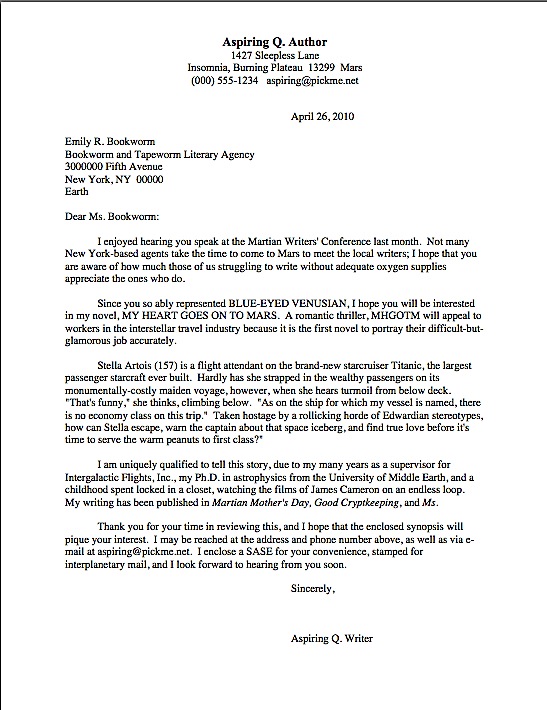
Now that we’re thinking in terms of constituent parts vs. whole, we can see that what AM is asking about is not how to construct the entire query letter — she couldn’t be, since elements 1, 2, and 5-7 are not concerned with plot or narrative, right? #3 could be relevant here, but only if the agent had a track record of representing multiple-narrator books. (In that case, Since you so ably represented STORY IN FIFTEEN VOICES, I hope you will be interested in my multiple-narrator novel… would be perfectly acceptable.)
You look so cute with your eyes bugged out like a cartoon character’s. “What do you mean, Anne?” flabbergasted would-be queriers everywhere exclaim. “How is it possible that something as important as the narrative structure of the book could affect only a single paragraph of the query? Isn’t the voice choice the single most important thing to know about a multiple-narrator story — or a first-person narrative, for that matter? Or, if it’s not the most important, isn’t it at least the most interesting?”
From a professional point of view, the answer to those last two questions is very short: no. And the answer to the second, the one about why the narrative choice shouldn’t spill over to the rest of the query, is also pretty brief: because how a writer has chosen to tell the story in the book is not a required element in the query.
Oh, scrape your jaw off the floor. You don’t see it on the list above, do you?
Unless an agency’s guidelines specifically ask for information about narrative voice, leave it out, or as we’ve already discussed, you’ll run the risk of producing a query that reads more like a book report than, well, a query. Remember, the query is not expected to provide analysis or review of the manuscript it is pushing: it’s supposed to tell Millicent the premise.
Let’s face it: telling her how many protagonists there are, or whether the narrative talks about their experiences in the first or third person, actually doesn’t give her much of an indication of what the book is about, right? So is it really the best use of scant querying space?
In case you’re waffling on that last question, here’s a peek at what the result might be if a writer’s answer were yes.
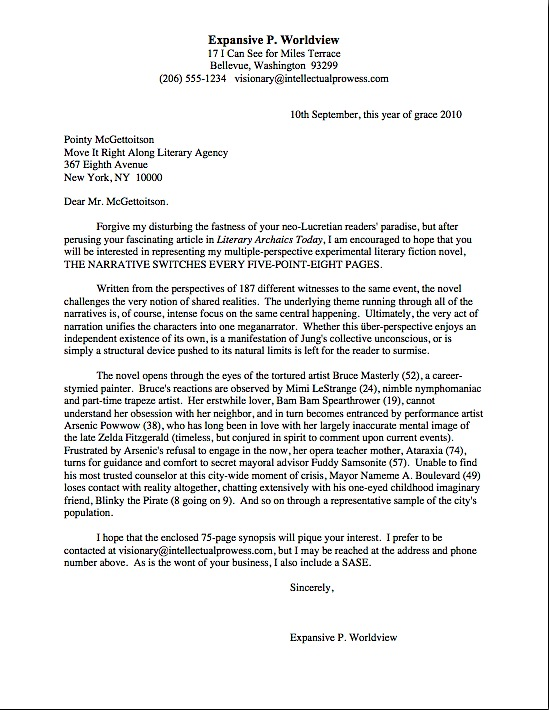
Quick: what is this book about? What is the event that all of these narrators observed, and what about it is compelling enough to hold the reader’s interest through 187 changes of perspective?
Beats me. So how can it be an effective query letter? Especially when — and give yourself some extra Brownie points if you caught this — Expansive made the classic Millicent-baiting mistake of referring to his work by the redundant phrase literary fiction novel. (All novels are fiction, right?) Besides, everyone knows that ol’ Pointy is a woman, and thus should be addressed as Ms. McGettoitson.
Equally damning, all of that analysis of structures and themes is going to read like a book report to Millicent. (That’s even the industry’s term for this kind of writing in a query, pitch, or synopsis: high school book report.) In a query, you’ve got one or at most two paragraphs to convince an agent that this is a story she should read. Talking about a novel’s structure is almost never the best means of doing that.
So how would I advise Expansive to go about revising this query? Well, for starters, I would encourage him not to name so many characters in his descriptive paragraph. Not sure why? Okay, here’s pop quiz: without looking, how many can you name?
That’s the maximum he should keep. He could also make the descriptive paragraph more compelling by concentrating on the overall story of the novel, rather than enumerating as many perspectives as he can in that short a space.
Those are the big fixes. While he was at it, I would urge him to make that first paragraph a touch less off-puttingly pretentious in its phrasing. I would also advise him to throw out the second paragraph altogether.
And every multiple-perspective lover’s hand shoots into the air. “But Anne, the first thing almost any aspiring writer will say if asked to describe his multiple-perspective novel, or even first-person narrative, is something like, ‘Well, there are eight points of view.’ Are you seriously suggesting that he should suppress that information in his query?”
In a word, yes. Few professional readers would consider the narrative voice choice the most important thing to know about a book, after all.
Why? Well, think about it: how could voice choice alone possibly help Millicent decide whether a book’s plot might interest her boss? As anyone who has ever read fiction manuscripts for a living would be only too glad to tell you, there are excellent multiple-perspective novels; there are lousy ones, and there are a million different gradations in between.
Ditto with every other perspective choice. At query time, it’s just not a significant issue. It’s not as though agents are very much given to strolling into the office first thing in the morning, yawning, and saying wistfully, “You know what I’d really like to read today? A first-person narrative. Yep, that would really hit the spot. Got any of those on hand, Millie?”
Not going to happen. If the narrative choice works on the page, great, but the only way Millicent can possibly tell if it does is to — wait for it — read the manuscript. Which, by definition, she’s not going to be doing at the querying stage.
So why not let your exciting perspective choices be a pleasant surprise at submission time? Concentrate instead in the query on getting her to ask to see the manuscript.
Which leads us right back to AM’s query-editing problem, doesn’t it? She’s in luck: the only part of a query letter that could possibly require a multiple-protagonist novel to be handled differently from a single-protagonist one would be that pesky descriptive paragraph where the aspiring writer attempts to give some indication of what the book is about.
#4 on our must-include list, in other words.
There’s a reason that lovers of multiple-protagonist stories find constructing the descriptive paragraph frustrating, and a darned good one. Let’s face it: that’s not a lot of space to talk about a perfectly straightforward boy-meets-girl story, let alone one following five protagonists, seventeen subplots, and fourteen generations of bunnies on an epic trek across four continents.
So I’ve got a radical suggestion: don’t try.
I’m quite serious about this. Instead of attempting to force a super-complicated plot into the space of a scant paragraph, just show enough of the premise to intrigue Millicent into asking to see the manuscript. Which is, after all, the actual goal of any query, right?
Right? Hello? Please don’t tell me that we’re heading into another minute and a half of silence.
To be fair, if you didn’t respond immediately in the affirmative, you’re not alone. Many writers new to the game assume, wrongly, that if only their query is good enough, an agent is going to say yes on the spot to representing the book. Since that literally never happens — no agent in his right mind would agree to represent a manuscript or book proposal she hasn’t read, unless it was written by someone who is already a celebrity in another field of endeavor and thus could reasonably be expected to attract book-buyers by name recognition alone — the assumption that it should renders the hard process of coming up with that descriptive paragraph even harder. The sooner an aspiring writer can jettison it, the better.
Is that dangerous notion out of your system? Excellent. Embrace this far more workable principle instead: the point of the descriptive paragraph in the pitch is NOT to distill the essence of the book; it is to convince the agent or editor to ask to READ it. Thus, your job is not to summarize the plot, but to present it in a fascinating manner.
Again, this is a tall order, even for a novel focusing on a single protagonist. Within the space of a paragraph, it’s genuinely difficult to make someone sound like an interesting character in an interesting situation. Generally speaking, your best bet is to focus on what’s most unusual about the protagonist and/or the situation.
Don’t believe me? Okay, if you read as many queries as Millicent, which would intrigue you more:
an accountant confronted with an ethical dilemma , or
a goose-loving accountant forced to decide between betraying his parfait-scarfing boss and being kidnapped by a mob of crazed azalea gardeners?
One’s generic; one’s fresh. As a fringe benefit, the second one is far, far less likely to make Millicent roll her bloodshot eyes and mutter, “Oh, God, not another accountant-in-a-dilemma story. Just once, I’d like to see one of ‘em do the wrong thing.”
Okay, so that’s a pretty jaded response. Also, the second presentation’s details are a little weird. But it caught your attention, didn’t it?
Those of you writing about multiple protagonists are scratching your pretty little heads right about now, aren’t you? “But Anne,” these sterling souls inquire politely, because they know that’s the best way to get me to answer. “That sounds like great advice, but how does that apply to my novel? All seven of my protagonists are interesting people in interesting situations, but there just isn’t room in a 1-page query letter to introduce them all that way. Help!”
Superlative question, head-scratchers. In theory, a good multiple-protagonist novel is the story of LOTS of interesting people in LOTS of interesting situations.
That can make for a great read, but it definitely presents a space-usage problem in a query letter. Take a gander at what the descriptive paragraph of John Steinbeck’s East of Eden would look like if Uncle John were (a) querying it today, (b) not already famous by the time he wrote it, and (c) he didn’t already know that the manuscript’s first 10 pages being almost exclusively concerned with the soil conditions of the Salinas Valley would probably lose Millicent pretty quickly.
Adam Trask and his brother Charles have a problem — and not just that their father has built a career on lying about his experiences in the Civil War.
Allow me to pause there for a moment: the story’s grabbed you already, hasn’t he? See what I mean about the hook value of unusual details?
But let’s assume for the purposes of argument that Millicent hasn’t already e-mailed Uncle John and asked to see the manuscript without reading the rest of the letter. (Hey, she’s busy; she already knows she wants to read the manuscript.) See how quickly the energy fades as the description piles on more and more protagonists:
Adam Trask and his brother Charles have a problem — and not just that their father has built a career on lying about his experiences in the Civil War. For reasons Adam is powerless to explain, insensate rage overcomes Charles anytime their overbearing father shows so much as a flicker of preference for his brother. Sent off to the Indian Wars against his will, Adam loathes killing the innocent; Charles, deserted at home, farms and longs for his brother’s return. Meanwhile, wee sociopath Cathy Ames blithely leads young men to their doom in her home town. After a young teacher kills himself for her sake, her parents attempt to curb her — such a pity that they underestimate Cathy’s familiarity with kerosene. Out in California, Samuel, a family patriarch who bears a suspicious resemblance to the author, proves himself incapable of making money, but is nevertheless the most respected advice-giver in the whole Salinas Valley. Samuel is the first to notice that Lee, Adam and Cathy’s hired hand, loses his pidgin accent as soon as anyone speaks to him intelligently. After Cathy unwillingly gives birth to twins Cal and Aron, she flees to Faye’s house of ill repute. Trusting Faye comes to love Cathy — now calling herself Kate — like a daughter, unaware of how the young woman has historically treated her relatives. The Sheriff of Monterey County worries about Kate and Adam, but can do little as she builds her business. As the Trask boys grow, secure in Lee’s love and Adam’s depressed indifference, three of Samuel’s children have their own individual adventures. Abra, a beautiful young girl visiting the Trasks with her parents, is charmed by eleven-year-old Aron’s comeliness, but repelled by Cal’s rudeness.
That’s not the plot, mind you — that’s just a basic list of the small army of protagonists and their initial conflicts. Had the movie buffs out there noticed that I haven’t yet gotten to the part where the James Dean film version of the book began. That started two-thirds of the way into the book, to make the story fit within the film’s running time, completely excising Lee and transforming Abra into a love-crazed simp.
That’s a shame, because it honestly is a marvelous book — one that any serious novelist interested in handling multiple protagonists might want to read, incidentally, and pronto. Steinbeck was incredibly skilled at weaving perspectives together into a solid, real-feeling world.
Clearly, though, no matter how wonderful the novel might be, focusing upon all of the protagonists isn’t going to work in the query letter. What other alternatives would Uncle John have?
What many writers would choose to do in his place would be simply to select one protagonist and present that character as if he were the only protagonist. This can work wonders, in terms of simplifying the story for querying purposes. Take a gander:
Adam Trask has a problem — and not just that his father has built a career on lying about his experiences in the Civil War. For reasons Adam is powerless to explain, his brother Charles is overcome with insensate rage anytime their overbearing father shows so much as a flicker of preference between them. When a mysterious battered beauty arrives bleeding on their doorstep, Adam abruptly decides to pursue his dream: move across the country with a woman he barely knows to create his own garden of Eden in the most beautiful place he has ever seen. But is his lovely new wife a craftier version of Charles, only too eager to wreck his hard-won paradise?
Gets right to the point, doesn’t it? Here, Adam’s an interesting character from an interesting family, faced with interesting conflicts.
As a bonus, the description even tells Millie how Adam intends to overcome those conflicts and move toward what he wants. (And did you like how I worked in the word dream? Millicent loves seeing that word in a descriptive paragraph. Other perennial faves: passion, desire, longing, want, love, happiness.)
It does not, however, give a particularly complete sense of the book, does it? Partially, that’s a function of focusing on the premise. As is often the case, restricting the description to merely the set-up means that the query letter virtually ignores two-thirds of the book. (And not the two-thirds ignored by the movie version.)
That’s not a bad strategy for a query, by the way. Borrow a page from Scheherazade’s book: don’t tell too much of the story up front; be detailed, but leave Millicent curious to hear more.
Is concentrating upon only one of several protagonists the only way to produce a query for a complex multi-protagonist novel? Not by a long shot. Here’s an even better suggestion: introduce the story of the book in the descriptive paragraph, not the stories of the various characters.
Why, that’s the advice I gave Expansive, wasn’t it? Allow me to tailor it to this case.
For a novel with multiple protagonists to draw the reader along from storyline to storyline, it must necessarily have an underlying unitary narrative, right? (Unless the chapters and sections are a collection of unrelated short stories — which would make it a short story collection, not a novel, and it should be queried as such.) Even if it is told from the point of views of many, many people, there is pretty much always some point of commonality.
That area of commonality should be the focus of your descriptive paragraph, not how many characters’ perspectives it takes to tell it. Strip the story to its basic elements, and describe that.
Those of you juggling many protagonists just sighed deeply, didn’t you? “But Anne,” lovers of group dynamics everywhere protest, “why should I limit myself to the simplest storyline? Doesn’t that misrepresent my book?”
Not more than most omissions geared toward brevity — you would not, for instance, take up valuable query space with telling an agent that your book was written in the past tense, would you? Or in third person?
The point of the query is not to talk about the novel, as you would if you were reviewing it or analyzing it for a class; you’re there to interest Millie in the story.
So tell the story. Let your narrative choices be a fringe benefit discovered at manuscript-reading time, Expansive.
Before anyone hops onto that nearby soapbox to inform me huffily that in a good novel, the writing is the story — a statement with which I happen to agree, by the way — let me give you another example of why concentrating on the narrative structure seldom sells a story well. I’m certain the wandering spirit of Uncle John will forgive me if I use his story again as an example:
EAST OF EDEN is a multiple-protagonist novel covering three generations of the Trask family, as well as three generations of the author’s own family history. Told from the competing and sometimes factually inconsistent points of view of both fathers and sons, as well as the lover, wife, mother, and madam who alternately rules and destroys their dreams, this sweeping epic tells three different versions of the Biblical story of Cain and Abel — and the bystanders who see the tragedy reenacted again and again. Through the eyes of Lee and Samuel, the less-privileged characters supporting Adam and his sons, the reader gains a clear if limited picture of the casual racism, conflicting cultural values, and philosophies of the period.
That’s analysis, not description. It might get you an A on an American Literature exam, but the publishing industry just doesn’t talk about novels in academic terms. Tell Millicent a compelling story instead.
Has a high wind risen on the horizon, or have some of you been indulging in gusty sighs for the past few paragraphs? “Okay, Anne,” Expansive and his ilk concede reluctantly, “I plan to use the descriptive paragraph to show off my skills as a storyteller, rather than getting bogged down in a general discussion of the structure. But I write character-driven fiction — my story is my characters!”
Pardon me for doubting you, sighers, but in a well-told narrative, that’s almost never true. Even memoirs are seldom solely about their protagonists and nothing else. Protagonists live within contexts; they face obstacles to pursuing their goals; they encounter conflict. If they don’t, it’s hard to envision much of a dramatic arc.
Even in the extremely unlikely event that your book is such pure literary fiction that the characters and plot are irrelevant — again, almost unheard-of — concentrating instead upon experiments in writing style, your book is still about something, isn’t it? The interactions between the protagonists? Their hopes and dreams? The way that plain white wall changes in the light over 400 pages of the protagonists’ staring at it and nothing else?
That something can be the focus of your descriptive paragraph. Why? Because just as any agent is going to have to know what the book is about in order to interest an editor in it, Millicent’s going to have to be able to tell her boss what kind of novel she thinks the agency should consider representing.
Wait, what’s that you say? You’d like to see just how I’d follow this last piece of advice for Uncle John’s notoriously plot-heavy 600-page novel?
I was afraid you’d ask that. Frankly, if I were querying EAST OF EDEN to most agencies, I’d probably use the Adam-centric descriptive paragraph above; it’s a pretty good teaser for the first part of the novel. However, if I were approaching an agent who specialized in lengthy, character-driven epics written in a literary voice, I might try a more theme-oriented approach. For this book, I’d concentrate on the great big conflicts, opening with a wacky, memorable detail:
Invalided half an hour into his Civil War service, Cyrus Trask builds a career on lying about his many battles. He raises his sons, Adam and Charles, as miniature soldiers, but by the time they come of age, volatile Charles is too violent for even the Indian Wars. Forced to shoot at innocents against his will, meek Adam vows to use the rest of his life to create, not destroy. When mysterious beauty Cathy arrives at the Trask farm, nearly beaten to death, Adam abruptly decides to abandon his family to pursue his dream: move across the country with a woman he barely knows to create his own garden of Eden in the most beautiful place he has ever seen. But crafty Cathy longs to escape his hard-won paradise and carve out a safe haven for herself as madam, even if she must murder those who stand in her way. Left to raise his twin sons with only the help of Lee, his quietly scholarly housekeeper, can Adam avoid passing his legacy of violence down to yet another generation?
The answer to that question is, as any American literature major could tell you, is no. But there’s no need to tip Millicent off before she requests to read the manuscript, is there?
But whatever you do, don’t make her guess what your book is about it. As I can tell you from experience, prying basic information out of a recalcitrant conversational partner is just no fun. Keep up the good work!
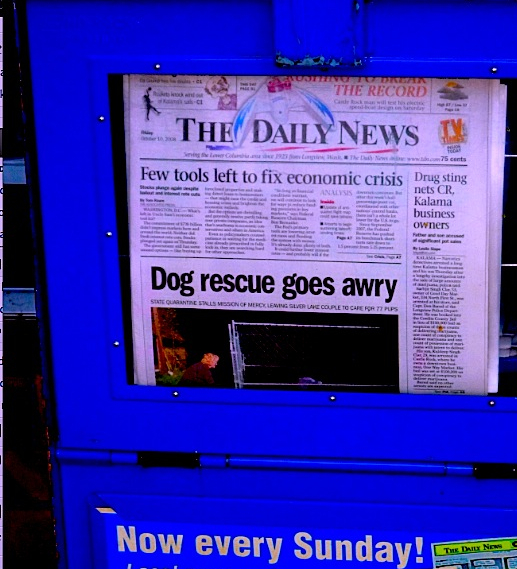
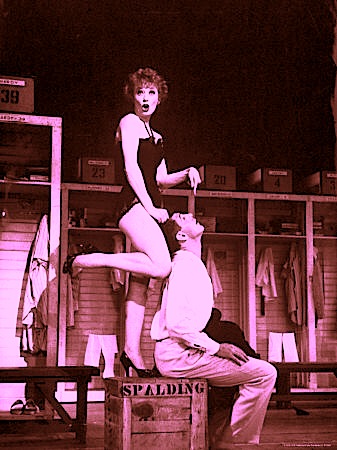


 If there is a single rule of thumb that may be applied at every stage of any successful author’s career, it’s that it ALWAYS behooves us to look critically at our own writing, rather than assuming that the only possible explanation for frowned-upon writing lies in the eye of the predisposition of the reader to frown.
If there is a single rule of thumb that may be applied at every stage of any successful author’s career, it’s that it ALWAYS behooves us to look critically at our own writing, rather than assuming that the only possible explanation for frowned-upon writing lies in the eye of the predisposition of the reader to frown.